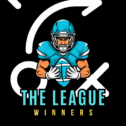With the league aggressively expanding its presence in Europe, is it time for the NFL to bring a failed league back?
The National Football League has massively expanded its reach into multiple European markets in the past few years.
Starting with a few games per year in London, the league now has three games there in 2024. Additionally, they have a game in Germany and are planning to hold one in Spain during the 2025 season. Teams have also received licensing rights for various international markets in Europe.
With the wheels turning for the NFL, the next step is likely to implement a new expansion team, or teams, on an international level. Is there a model for the league to use? If they are smart, they should utilize aspects from an old developmental league to pave the future of their international plans.
This model is the old NFL Europe league, which existed in different forms from 1991 to 2007. But what was NFL Europe? How was it structured, and how did it work?
NFL Europe’s History
The first iteration of NFL Europe was called the World League, which existed from 1991 to 1992. It comprised the Birmingham Fire, Sacramento Surge, and San Antonio Riders in the North American West. The Montreal Machine, New York/New Jersey Knights, Orlando Thunder, and Raleigh-Durham Skyhawks, replaced by Ohio Glory in 1992, were in the North American East. In the European league, the teams were the Barcelona Dragons, Frankfurt Galaxy, and London Monarchs.
The league was highly successful in Europe but was bleeding money in general. The league lost nearly $7 million, and none of its teams profited in two years.
As a result, the league shut down operations until 1995, when it returned as NFL Europe. The teams in Barcelona, Frankfurt, and London returned, joined by Rhein Fire, Amsterdam Admirals, and Scottish Claymores. London’s team folded in 1998, replaced by the Berlin Thunder. The Cologne Centurions and Hamburg Sea Devils later joined the league to replace the Barcelona and Scottish teams.
Similar to the World League, NFL Europe did not turn a profit. Multiple teams folded, attendance was low, and overall interest in the league waned as time passed. Ultimately, the league folded in 2007 when the NFL shifted its strategy toward hosting games in Europe instead of having a league located there.
However, some positives came from the league.
Multiple star players got their start in Europe, allowing them to thrive in the NFL later on. This included Kurt Warner, Brad Johnson, Jake Delhomme, Adam Vinatieri, and Dante Hall. Additionally, the league experimented with different rule changes, such as a defensive two-point conversion.
While it did not thrive as a league, NFL Europe helped develop players and laid a foundation for American football in Europe, which still thrives today.
NFL Europe: The Return?
Almost two decades after its official folding, there are two ways to ensure that the “new” version of NFL Europe can thrive.
The first method is a new division of European expansion teams. This would likely be years down the road, as the NFL would have to balance the league with another new division elsewhere.
As a purely European division, though, the NFL would have successfully integrated the former league into the larger NFL. The Shield would surely be thrilled to have a Champions League-style atmosphere constant throughout its regular season.
The logistics would have to be hammered out for the players and the schedule, but that has not stopped the NFL before in its pursuit of the almighty dollar.
On the one hand, the NFL could utilize parts of the NFL Europe model for a new developmental league. In this structure, each organization would have a “minor league” team linked to them. The league would have teams stateside and abroad. For example, Buffalo could have a team near Westchester, New York. This would be to have the minor league team in a short vicinity to the “pro” team.
On the other hand, NFL teams could utilize their new marketing rights in Europe for the developmental league. The New York Jets, for example, could use London as the location of their feeder team.
There are many fashions for the NFL to capitalize on its European presence. However, using aspects of NFL Europe’s model and structure may be the best course of action for the league going forward.
Discover more from The League Winners
Subscribe to get the latest posts sent to your email.

